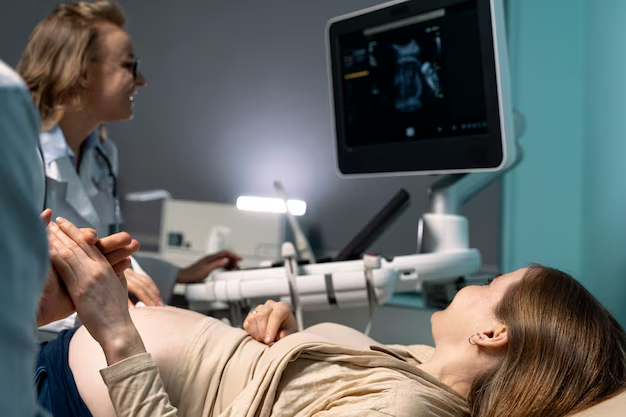Myomectomy
A myomectomy is a procedure that allows surgeons to remove uterine fibroids. There are different methods to the surgery. All methods leave your uterus in place so that you can get pregnant in the future.
What is a myomectomy surgery?
A myomectomy is a procedure to remove uterine fibroids (also known as leiomyomas) from your uterus. Fibroid are growths made up of connective tissue and muscle cells. They can appear inside or outside your uterus. They’re almost always not cancerous (benign). You can have one or many fibroids, and they can vary in size. During a myomectomy, your surgeon removes the fibroids but preserves the tissues in your uterus so that you can become pregnant in the future.
Myomectomy is an alternative to a hysterectomy, which removes your uterus, cervix and fibroids.


What does myomectomy treat?
Your healthcare provider may recommend myomectomy surgery if you have uterine fibroids that are causing:
- Pelvic pain.
- Irregular bleeding or bleeding between periods.
- Heavy menstrual bleeding.
- Not being able to fully empty your bladder.
Myomectomy surgery is a good option if you wish to become pregnant in the future and want to preserve your fertility.
What are my treatment options if I have fibroids?
Uterine fibroids are extremely common, and some don’t require any treatment. Your treatment depends on a few factors
Surgery isn’t the only treatment option. Medication may also be an option for treating uterine fibroids. Taking medication may reduce the symptoms of fibroids and shrink their size. Other treatment options include uterine artery embolization or radiofrequency ablation. Your provider will recommend the best treatment option based on your health history and preferences.
What’s the difference between a myomectomy and a hysterectomy?
The main difference between the two procedures is that a myomectomy removes only the fibroids, leaving your uterus in place. Your menstrual period will return, and you can get pregnant in the future. A hysterectomy removes the fibroids and your uterus. People who undergo a hysterectomy can no longer become pregnant and won’t get their menstrual period.
Procedure Details
Your healthcare provider will inform you of any preparations you should make before surgery. This includes instructions on when to stop eating and drinking, or if you should stop taking certain medications.
Your provider will go over post-operative instructions, like how long you can expect to stay in the hospital or surgical center, and what types of modifications you should make to your lifestyle while you recover.
Ask your provider any questions you have before surgery so you know what to expect.
On the day of surgery, the following things may happen:
- Your provider will insert an IV (intravenous line) into a vein in your arm or hand. This gives you fluids and medication during surgery. You also receive anesthesia through an IV so you don’t feel pain during the procedure.

- Your provider will attach monitors to measure your heart rate and other vital signs during surgery.
- Your provider may insert a catheter to empty your bladder during surgery.

Are there different types of myomectomy?
There are three main types of myomectomy:
- Open myomectomy (or abdominal myomectomy).
- Minimally invasive laparoscopic or robotic myomectomy.
- Hysteroscopic myomectomy.
The decision on what type of myomectomy to have is based on several factors, including:
- Fibroid size.
- The number of fibroids.
- Where in your uterus the fibroids are located.
Open myomectomy
A surgeon performs an open myomectomy (abdominal myomectomy) through a cut (incision) in your belly (abdomen). The incision may go up and down (vertical) or across (horizontal). This type of procedure may be the best option for extremely large fibroids because the surgeon can see all your pelvic organs. Recovery after an open myomectomy is similar to any other major surgery. Recovery will include:
- A few days in the hospital.
- Up to six weeks at home before you feel 100%.
Minimally invasive laparoscopic myomectomy
There are several types of minimally-invasive options for a myomectomy. These surgeries generally have quicker recovery times and are easier on your body.

- Laparoscopic or robotic myomectomy: This procedure uses a small, lighted telescope that your surgeon inserts through your belly button. Then, your surgeon makes several other small incisions in your abdomen where they insert surgical tools to assist them in removing the fibroids. Then, they remove the fibroids through your vagina, or through the small openings in your abdomen. Some surgeons use a robot to control the movement of instruments during this type of surgery (robotic myomectomy).
- Single port myomectomy: This surgery uses only one opening near your belly button for all the surgical instruments. This causes a slightly larger incision in your belly button, but no other incisions on your abdomen.
- Hysteroscopic myomectomy: This procedure requires no incisions at all. When fibroids are in just the right place within your uterus, your surgeon can put a camera with a specialized attachment through your vagina and into your uterus to remove them. This type of surgery is quick compared to the others.

Duration of myomectomy surgery
It depends on the type of surgery, location of the fibroids and how many fibroids your surgeon needs to remove. In most cases, you can expect the surgery to take between two and three hours. However, ask your provider what you can expect on the day of surgery to be sure.
Myomectomy can be painful. However, there are options for pain relief both during and after surgery. Talk to your surgeon about what you can expect after surgery and how you can manage your pain.
Risks / Benefits
What are the complications of fibroid treatments?
All surgeries have the potential for complications. Because of this, your provider may suggest nonsurgical treatment options first. Nonsurgical treatments may include:
- Watchful waiting. You provider will evaluate you in six to 12 months, unless you develop symptoms.
- Hormonal medications to suppress your ovaries. This reduces the amount of vaginal bleeding and can decrease the size of the fibroids.
Post Surgery and Recovery
Recovery depends on the type of procedure you have. It also depends on whether any problems arise. You can expect some pain for the first few days. Your provider will give you medication for pain. They’ll also encourage you to move your legs or take small walks after surgery to prevent blood clots.
With an open myomectomy, full recovery before getting back to your normal activities can take up to six weeks.
After a laparoscopic myomectomy, you may go home the same day. Recovery at home is about two to four weeks.
If the procedure is done hysteroscopically (through your vagina without incisions), full recovery can be just a matter of days.

Your surgeon will talk to you about when you can return to your normal activities. It’s important to follow these instructions to allow yourself to recover. How long you need to modify your activities depends on the type of surgery you had. You can expect to need more time to recover if you had an open abdominal myomectomy.
Some of the things you can expect include:
- Vaginal bleeding and discharge for a few weeks.
- Don’t lift anything heavier than 5 to 10 pounds for the first week after surgery. You may need to wait longer if you have an open abdominal surgery.
- No sexual intercourse for six weeks. Nothing should go inside your vagina during your recovery.
- Gradually increase your activity level. Don’t abruptly jump back into your normal activities. Start slowly and monitor how you feel.






